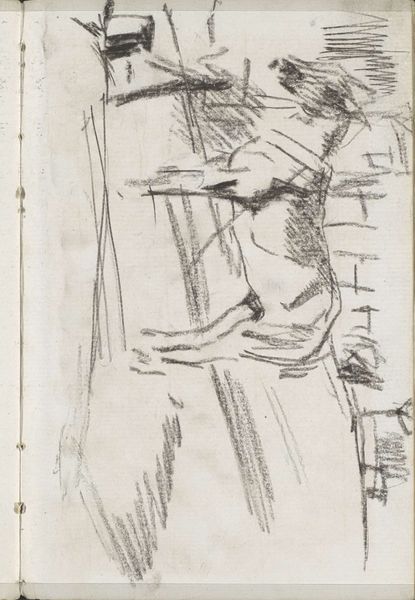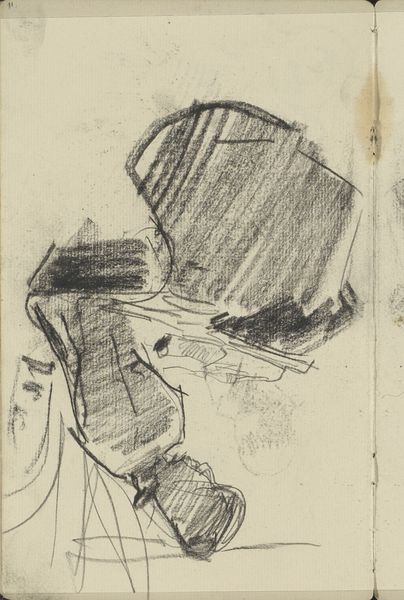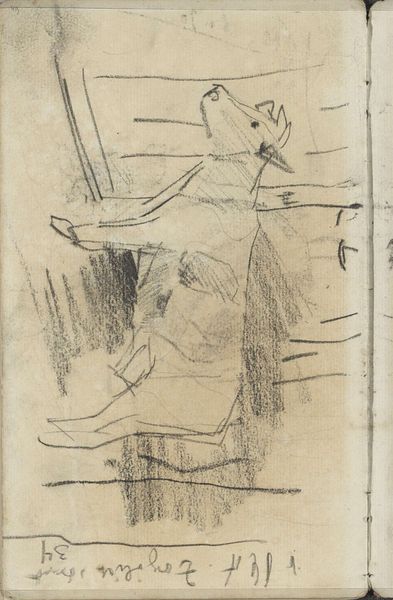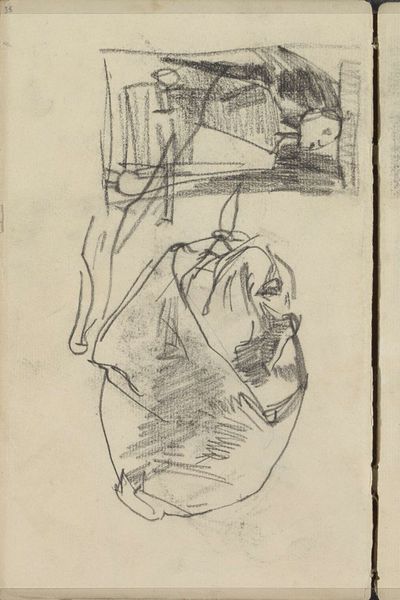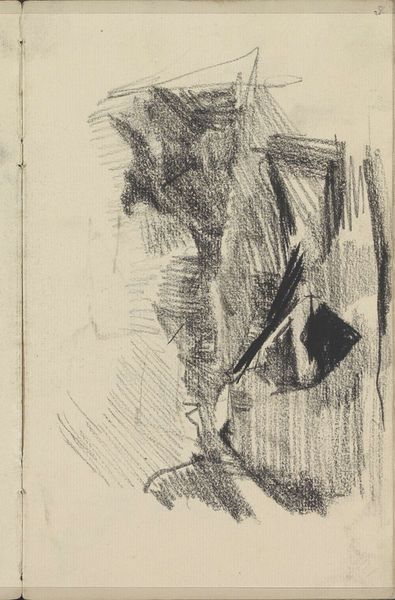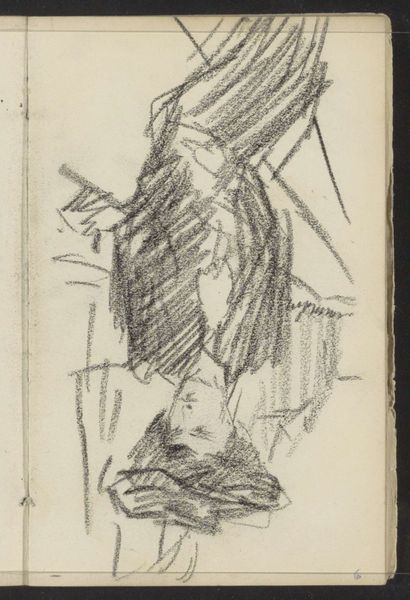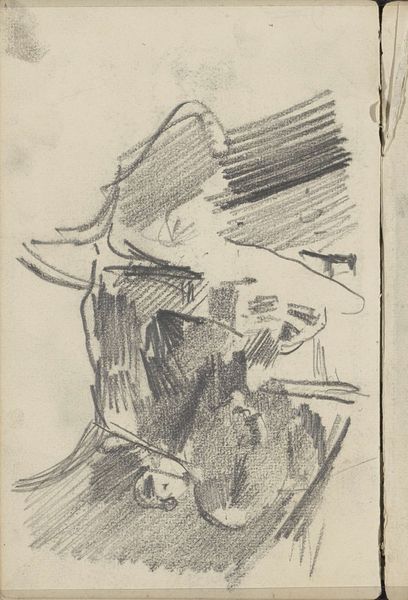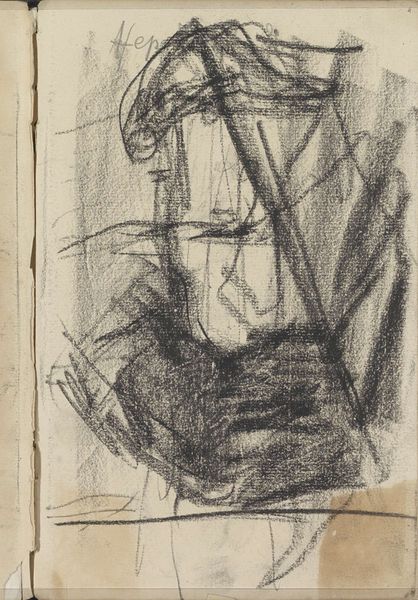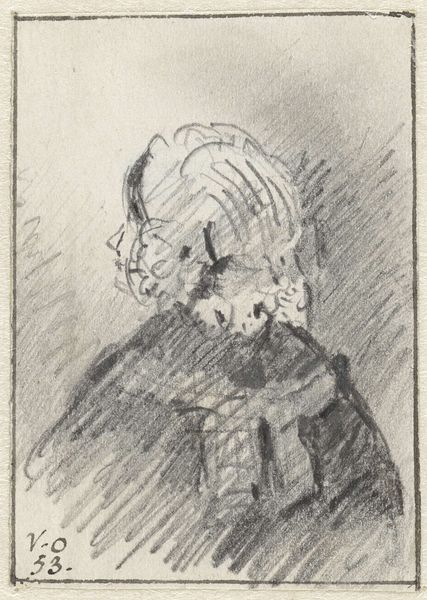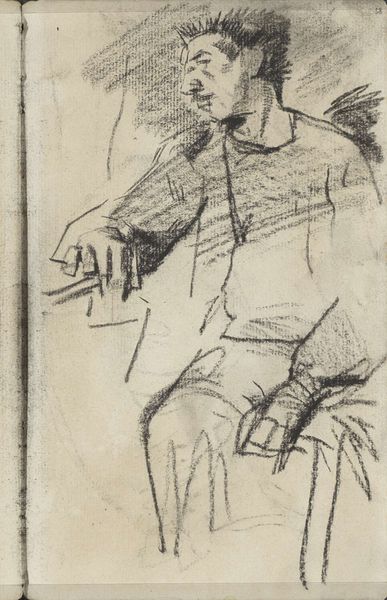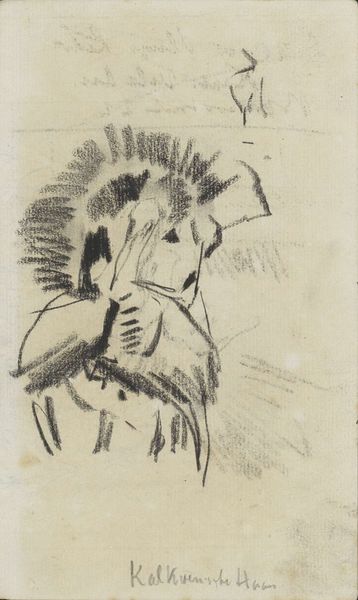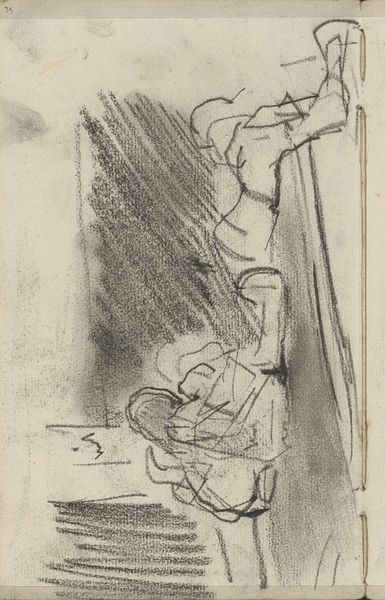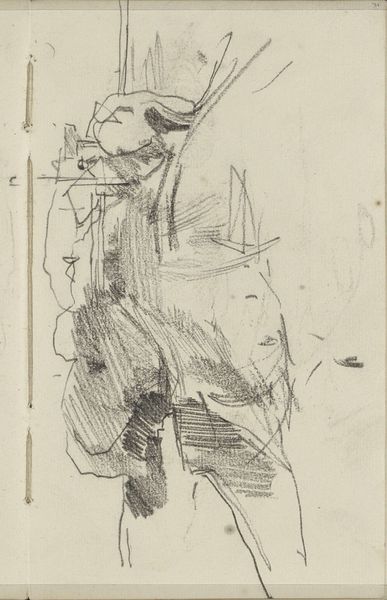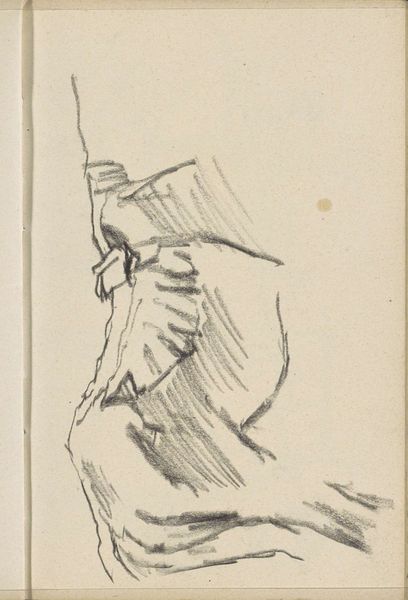
drawing, pencil, graphite
#
portrait
#
drawing
#
impressionism
#
figuration
#
pencil
#
graphite
Copyright: Rijks Museum: Open Domain
Curator: This evocative graphite drawing, titled "Landschap, mogelijk een duinlandschap," or "Landscape, possibly a dune landscape," comes to us from George Hendrik Breitner, and it's estimated to date from around 1882 to 1886. What are your initial thoughts? Editor: It has a kind of urgency, doesn’t it? Raw energy captured with quick strokes. There’s a bleakness, almost industrial, in the grey tones—not the romantic dunescapes one might expect. It gives me the feeling that it should belong to a different time period than the late 19th Century. Curator: Absolutely. Consider Breitner's relationship to Amsterdam. While part of the art scene, he distinguished himself by portraying working-class life and the rapidly changing urban environment, challenging the prevailing norms in a time when genre painting was closely tied to ideas about national identity. The way the piece represents its topic and the values it embodies mark this piece as socially conscious and critical. Editor: And look at how that sensibility is reflected in the technique. The marks are so immediate. Was Breitner deliberately moving away from the academic precision valued by the institutions of the time? Was it a conscious rebellion, a rejection of those established artistic structures? Curator: There's certainly an argument to be made there. Impressionism allowed artists to capture fleeting moments, sensory impressions that resonated with the changing pace of life in modernising cities. To me, this particular drawing resonates as almost journalistic. I'm struck by the way he suggests the weight of atmosphere. Editor: Right, the atmosphere is tangible. I can almost feel the wind whipping across the dunes, the sand stinging my face. It's less an objective depiction of a landscape and more an experience filtered through Breitner's subjective feelings. I wonder how it was perceived back then and whether his peers took to the idea of turning art into feelings? Curator: Early viewers may have struggled to fully appreciate the psychological and societal layers of his works at the time, accustomed as they were to conventional landscape art of the day. In today’s world, these perspectives resonate deeply as it opens critical discourses around labor, modernity, and perception. Editor: That’s fascinating, because looking at this from today, there is so much here in terms of capturing human sensibility. Thank you, as always, for putting art into its historic context. Curator: Thank you. Examining it through a modern lens gives me a completely different feeling about what this drawing truly signifies.
Comments
No comments
Be the first to comment and join the conversation on the ultimate creative platform.
